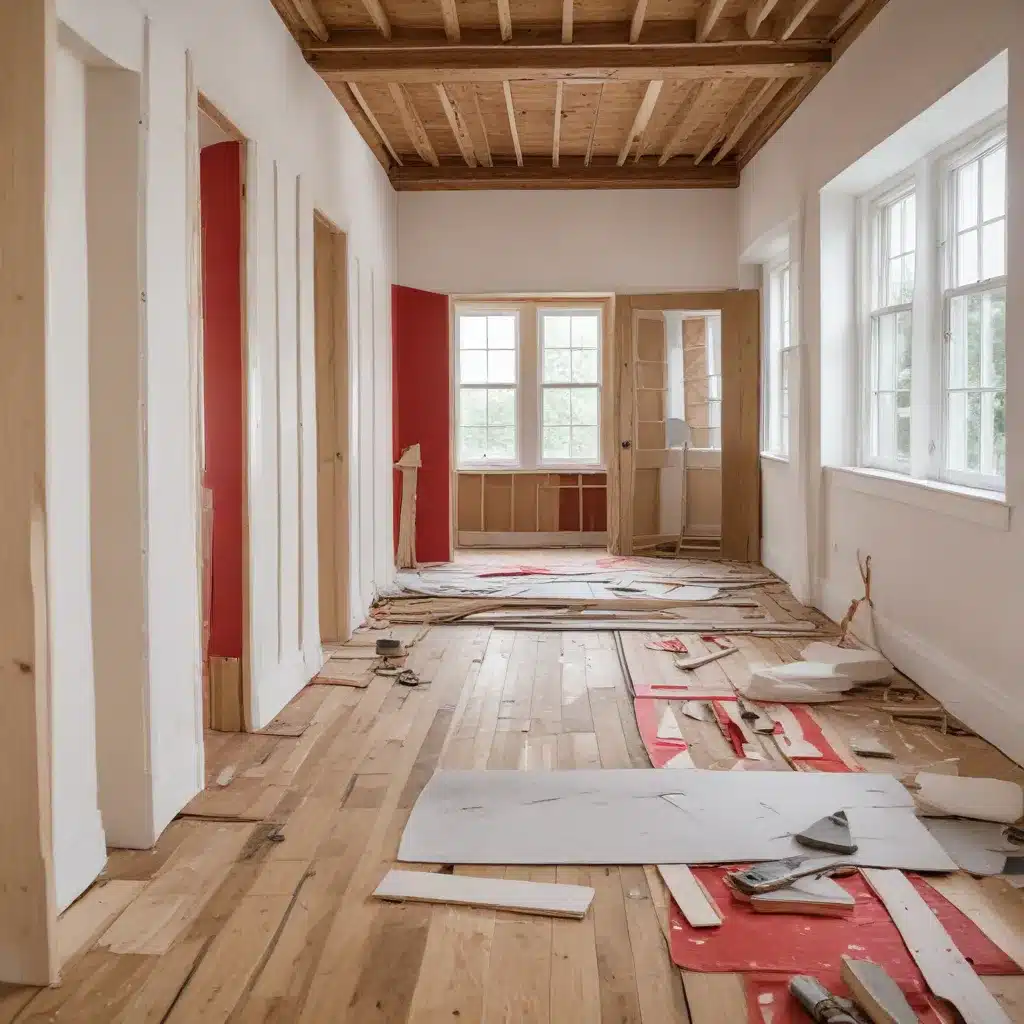
Understanding the Permit Process
Renovating your home can be an exciting journey, but navigating the permitting maze can quickly dampen that enthusiasm. Whether you’re planning a budget-friendly project or dreaming up an eco-friendly overhaul, securing the necessary approvals is a critical – yet often daunting – step.
Key Considerations for Homeowners
As a seasoned home improvement consultant, I’ve witnessed firsthand the complexities of the permit process. From zoning restrictions and inspection requirements to managing timelines and resolving delays, there’s no shortage of hurdles to overcome. However, with the right preparation and a strategic approach, you can streamline this process and keep your renovation on track.
Navigating Municipal Regulations
Each city and county has its own unique set of regulations when it comes to home improvements. It’s essential to familiarize yourself with the specific building codes, permit types, and submission guidelines for your area. This will help you anticipate any potential roadblocks and ensure your project aligns with local ordinances.
Streamlining Application Submissions
One of the keys to navigating the permit process is to have a well-organized, thorough application package. This may involve working closely with an architect, designer, or contractor to prepare detailed plans, specifications, and supporting documents. By taking the time to dot your i’s and cross your t’s upfront, you can minimize back-and-forth with the authorities and increase your chances of a swift approval.
Renovation Strategies for Success
Planning Ahead for Permits
When embarking on a renovation, it’s crucial to factor in the permit process from the very beginning. Allocate sufficient time for securing approvals, as the timeline can vary significantly depending on the scope of your project and the responsiveness of your local building department. In some cases, you may even need to obtain a variance or conditional use permit, which can add several weeks or months to the timeline.
Maximizing DIY Opportunities
For homeowners with a bit of DIY know-how, there may be opportunities to tackle certain tasks without the need for permits. Minor cosmetic updates, non-structural changes, and energy-efficient upgrades are often exempt from the permitting process, allowing you to save time and money. However, be cautious about attempting any work that could impact the safety or structural integrity of your home.
Collaborating with Professionals
While the DIY route may work for some projects, it’s often wise to enlist the help of licensed contractors, electricians, and plumbers for major renovations. These professionals understand the intricacies of the permit process and can guide you through the necessary steps, ensuring your project meets all code requirements. By working with experienced tradespeople, you can avoid costly mistakes and streamline the approval process.
Overcoming Common Permit Challenges
Addressing Zoning Restrictions
One of the most common hurdles in the permit process is navigating zoning regulations. These rules dictate the specific parameters for what can and cannot be done on your property, from setback requirements and lot coverage limits to height restrictions and use designations. If your renovation plans fall outside of the zoning guidelines, you may need to apply for a variance or seek a conditional use permit, which can add significant time and expense to your project.
Managing Inspection Requirements
Throughout the renovation process, you’ll need to coordinate with local building inspectors to ensure your work meets all safety and code standards. This may involve scheduling multiple site visits, addressing any identified issues, and obtaining final sign-offs before you can move forward. Maintaining clear communication with the inspectors and being proactive about resolving any concerns can help streamline this aspect of the permit process.
Resolving Permit Delays
Permit delays can be one of the most frustrating aspects of a home renovation. Whether it’s due to backlogs at the building department, staff shortages, or unexpected complications, these delays can throw off your timeline and budget. To mitigate the impact, it’s essential to stay on top of your application status, be responsive to any requests for information, and explore options for expediting the process, such as hiring a permit expediter.
Optimizing the Permit Experience
Leveraging Online Resources
Many municipalities have embraced digital tools to streamline the permit process, offering online application portals, document uploads, and status tracking. Take advantage of these resources to minimize in-person visits and ensure your submission is complete and accurate. Additionally, explore any pre-application consultation services that may be available to help you navigate the process.
Communicating Effectively
Throughout the permit journey, clear and consistent communication with the authorities can make a significant difference. Familiarize yourself with the appropriate contacts, be proactive in following up on the status of your application, and be prepared to address any concerns or questions they may have. Maintaining a cooperative and transparent relationship can go a long way in securing the necessary approvals.
Maintaining Compliance
Ensuring ongoing compliance with permit requirements is crucial, even after your renovation is complete. This may involve scheduling final inspections, obtaining Certificates of Occupancy, and properly documenting any changes made to your home. Staying on top of these details not only protects you from potential fines or legal issues but also maintains the value and safety of your property for years to come.
By understanding the intricacies of the permit process, leveraging strategic planning, and collaborating with the right professionals, you can navigate the bureaucratic landscape with confidence. Whether you’re tackling a budget-friendly kitchen refresh, an energy-efficient home upgrade, or a family-friendly addition, the permit process doesn’t have to be a roadblock to your renovation dreams. With the right approach, you can streamline the journey and create the home you’ve always envisioned. For more practical insights and design inspiration, be sure to visit Reluctant Renovator.



